Horse and Train 1954
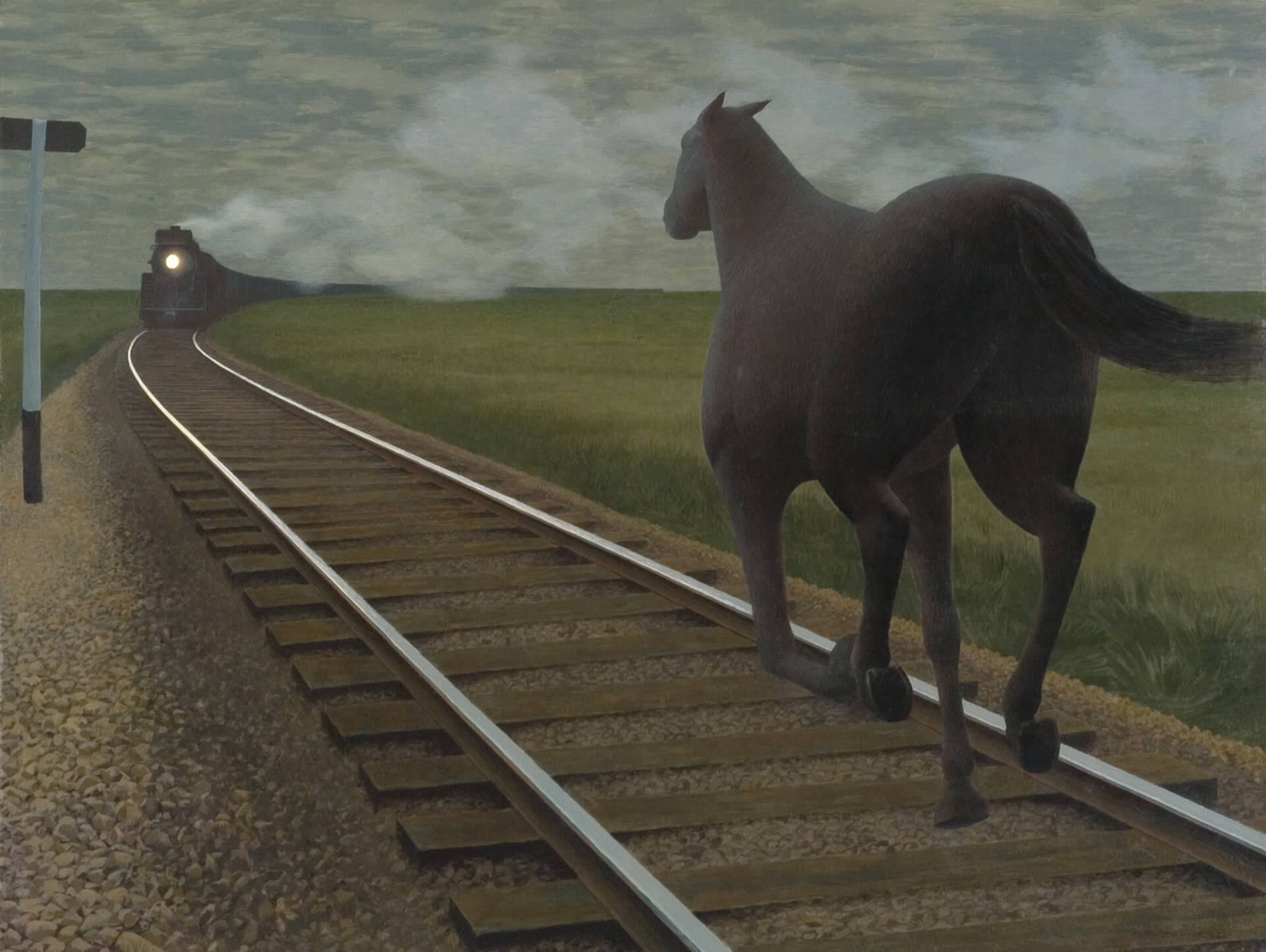
Alex Colville, Horse and Train, 1954
Casein tempera on hardboard, 41.2 x 54.2 cm
Art Gallery of Hamilton
Colville’s Horse and Train is among the most recognizable images in Canadian art and encapsulates much of what is unique about his practice. The clashing binaries of nature and machine, order and chaos, the waking world and the world of nightmares, are all at play in this simple, iconic image. It is tempting to view this small panel as a response to Surrealism, with its jarring juxtapositions, but Horse and Train had its genesis in a poem by South African writer Roy Campbell (1901–1957):
I scorn the goose-step of their massed attack
And fight with my guitar slung on my back,
Against a regiment I oppose a brain
And a dark horse against an armoured train.1
Campbell toured North America in 1953, including a reading stop at Mount Allison University in Sackville, New Brunswick, where Colville met the poet. A March 1954 sheet of sketches with preparatory images for this painting includes Colville’s notation of these lines.
By 1954 Colville had yet to arrive at one consistently used medium. Some paintings from this period are in oils, most in tempera. This work, in casein tempera, displays Colville’s signature pointillist style, with its surface composed of thousands of tiny strokes of pure, albeit muted, colour. The glazed surface captures light, creating an atmospheric effect of depth in a painting completely without surface texture.
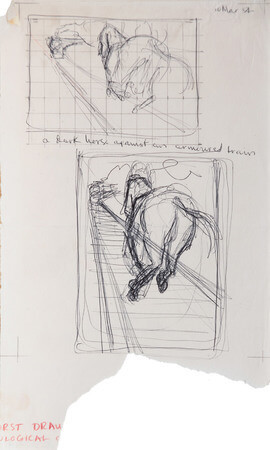
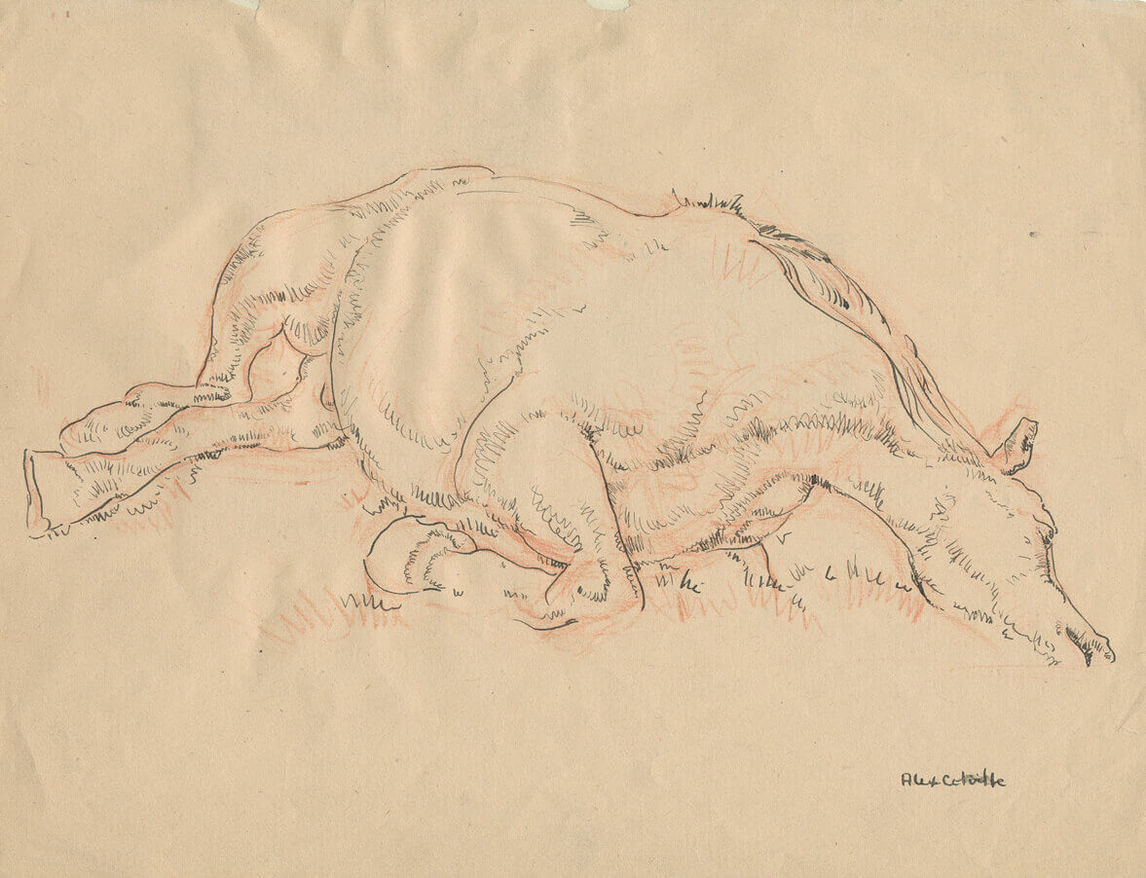
The moment depicted is frozen at its point of greatest tension. The train enters a curve just seconds before its light illuminates the dark horse. This moment clearly derives from Colville’s imagination, as no horse would willingly run on railroad tracks—the surface of gravel between wooden ties is too treacherous.
As with Campbell’s poem, this image contrasts an individual against the mechanized weight of progress—a bleak prospect, as Colville knew all too well from his wartime service. One of the most common sights on the Second World War battlefield were dead and dying pack animals that the armies used to haul supplies and artillery, which Colville depicted in his wartime sketches such as Sketch Drawing, A Dead Horse, 1945. Hopeless or not, Colville has placed individual will in opposition to collective, historical, mechanical inevitability.
This is a deeply romantic painting, depicting a charge into oblivion, but it is also thoughtful. In the 1950s Colville was reading existential philosophy; he was well aware of the writings of Jean-Paul Sartre (1905–1980) and Albert Camus (1913–1960), among others, and the idea that individual human will maintained its agency through opposition or rebellion was not unfamiliar to thoughtful artists of the day. Horse and Train has many possible readings. Perhaps it is a metaphor for human life, with the horse representing the individual, the tracks time, and the train death. Perhaps it is a lament about the world’s mechanization and its doleful effects on nature. As curator David Burnett observes, differing readings do not alter the painting’s impact: “One way of thinking of a dark horse does not preclude others…. And all readings (viewings) are poetically sharpened by the natural shock and surprise of the image.”2

 About the Author
About the Author
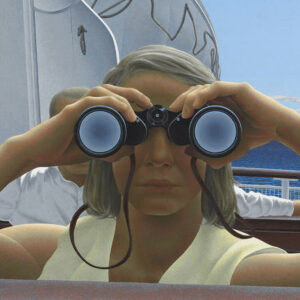 More Online Art Books
More Online Art Books
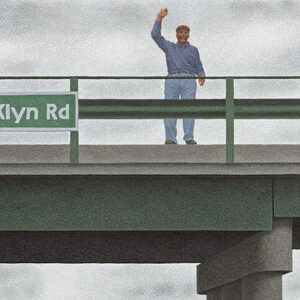 Acknowledgements
Acknowledgements